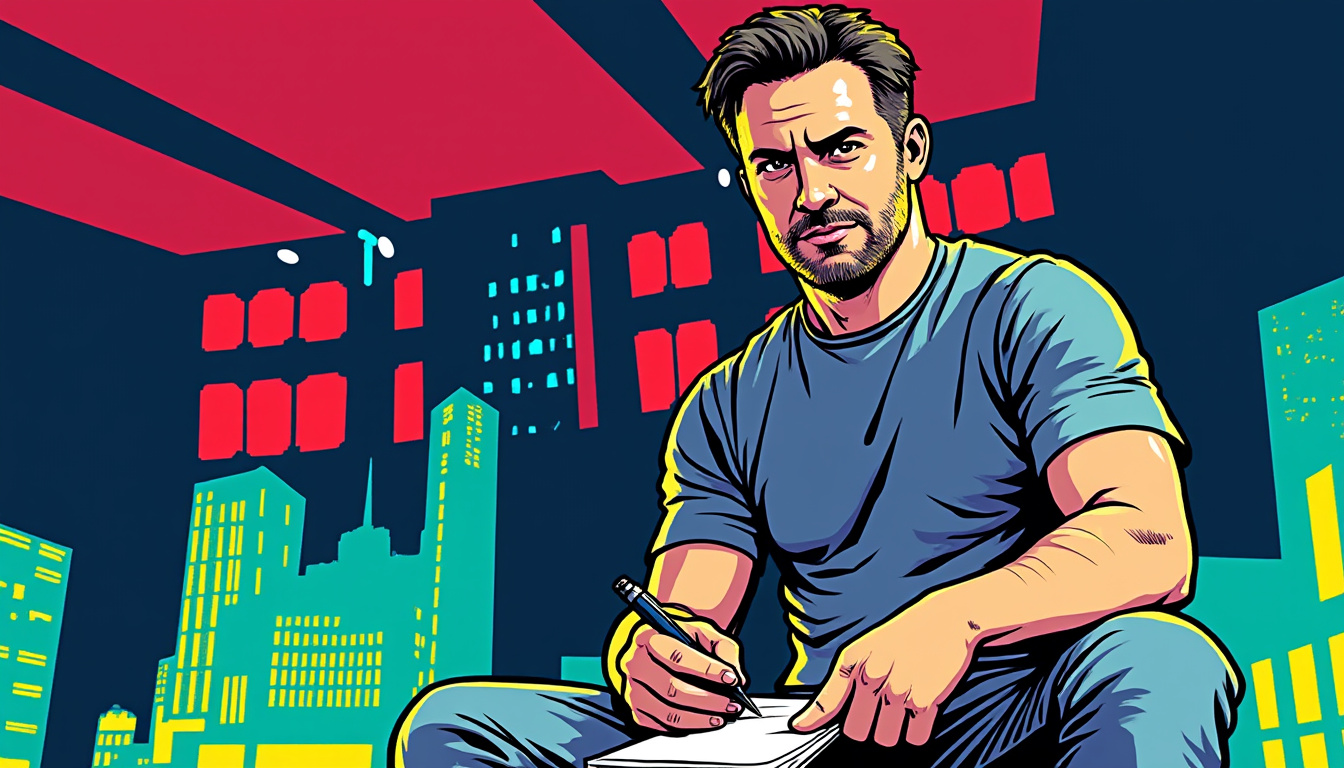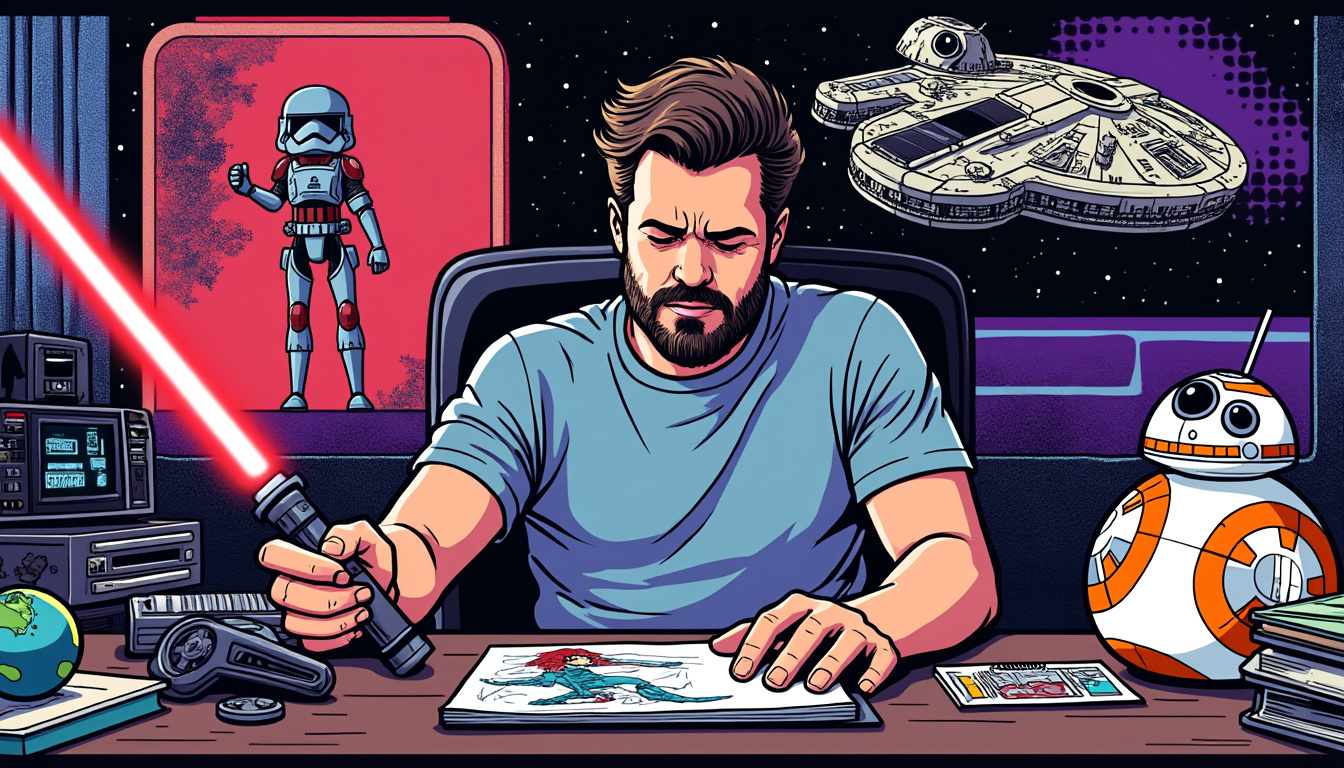In the complex universe of Star Wars, the connection between the original narratives and the expanding galaxy of storytelling presents unique challenges for creators. Within this framework stands Jason Aaron, a notable writer whose work on the Star Wars Marvel comics has become a focal point for understanding the intricate dance of continuity, creative constraints, and the broader implications of cinematic production during the Sequel Trilogy era.
Challenges Faced by Writers in the Star Wars Comics Universe
Writing within the Star Wars universe is a double-edged sword. Authors face the intrinsic challenge of creating compelling narratives while adhering to the established canon influenced heavily by ongoing movie productions. Jason Aaron, who led the relaunch of the Star Wars comics for Marvel from 2015 to 2017, illustrated this point during a panel at Fan Expo Canada. He explored the significant restrictions imposed on comic book narratives to maintain continuity with the Sequel Trilogy, particularly with characters re-entering the lore such as Luke Skywalker.

Among the prominent challenges was the restriction on certain character actions that were deemed “off-limits.” For example, the character of Luke Skywalker was prohibited from fishing in the comics due to a scene in The Last Jedi. Such limitations exemplify how tight coordination with the Lucasfilm Story Group can both enhance and restrict storytelling potential. The past imposition of boundaries on character interactions also highlights the multifaceted relationship comic writers have with the cinematic aspects of the franchise.
The Nature of Canon vs. Legends
The stark distinction between canon and legends within the Star Wars universe adds another layer of complexity to comic book writing. Following Disney’s acquisition of Lucasfilm, the legacy narratives that once flourished were reclassified as “Star Wars Legends,” thereby creating a bifurcation that prioritized new storytelling aligned with the films. This decision has led to a renewed focus on maintaining continuity across different media forms, yet it also burdens creators with restrictive narratives.
- ⚔️ Sequel Trilogy Limitations: Numerous character arcs were directly influenced by upcoming movies.
- 🎭 Expansion vs. Restriction: Writers navigated both creative freedom and confining barriers.
- 🌌 Interactive Universe: The interplay between visual media and print media dictates character portrayals.
This environment of caution cultivates a checkbox mentality among writers, where an excellent comic book story must simultaneously fit snugly within a predefined universe while attempting to provide fresh narratives. For Aaron, this meant acknowledging the shadow of the ownership by Lucasfilm as he ventured into the storytelling landscape.
The Role of the Lucasfilm Story Group in Comic Development
The Lucasfilm Story Group is ostensibly a benevolent force guiding the storytelling direction across various media forms under the Star Wars name. Yet, its influence runs deeper, often constraining the direction writers like Aaron can take. While the presence of such a group ensures continuity and consistency, it also extends into enforcing a rigid framework that limits creative exploration.
In his time with the Star Wars comics, Aaron encountered this firsthand. His frustration became apparent when navigating the narrative roadblocks set by the Story Group. They operated under a model that divided focus equally between comics and films, emphasizing the prioritization of cinematic narratives over lesser-known comic arcs.
The Impact of Restrictions on Narrative Flow
The need to synchronize comic book releases with cinematic strategies led to an intricate web of storytelling directives where spontaneity often faltered. This lack of flexibility can be evident in how character development is stagnated by the overarching demands of the films. For instance, if a character’s engagement in a particular activity or story arc is deemed incompatible with the cinematic timeline, writers are left to scramble, often resulting in a disjointed narrative flow.
These restrictions may lead to bland storytelling, where narrators are forced to forego potentially enriching experiences. The residual effect ultimately pushes comic writers to adapt their craft to fit the template dictated by cinematic events, resulting in missed opportunities for deeper character introspection.
- 📜 Inconsistent Character Development: Rigid narrative constraints may halt growth arcs.
- 🎨 Stagnant Creativity: The constant tug-of-war impacts storytelling fluidity.
- 👁️ Potential for Missed Prompts: Unexplored avenues of character depth become closed off.
User Perception of the Star Wars Comics Experience
The audience’s perception of narrative integrity is profoundly shaped by the success of the balance maintained by creators like Aaron. The comic book series serves as not only an expansion of the Star Wars saga but also a window into fan expectations. Discontent from the audience often arises when adaptations or deviations from beloved characters become evident, leading to criticisms that can overshadow critical narrative qualities.
In assessing user perception, loyalty towards iconic characters mandates a careful approach. Star Wars fans are generally invested in nuanced character portrayals that reflect their established personalities. The tension between the need for innovation and faithfulness to existing character traits is palpable within this realm.
| Character | Original Traits | Potential Conflict |
|---|---|---|
| Luke Skywalker | Heroic, Determined | Restrained by film narrative |
| Han Solo | Witty, Risk-Taking | Limited exploration due to cinematic portrayal |
| Princess Leia | Brave, Tactical Leader | Conflict with established movie arcs |
Much of the success in crafting narratives relies on the ability to engage with the audience’s pre-existing investment while providing compelling storylines. The need to walk a fine line becomes apparent when characters’ developments are perceived to be undermined by externally imposed constraints. What remains at stake is a loyal fanbase that expects layered storytelling interwoven with the intricate fabric of Star Wars lore.
Voices from the Creative Inner Circle: Insights on the Star Wars Comics
The creative voices behind the scenes often hold crucial insights into the day-to-day realities facing writers like Jason Aaron within the Star Wars canon. Interviews and comments reflect a tempered frustration regarding the balancing act between external constraints and creative ambitions. Aaron himself has openly discussed moments of intersection between the comic narratives and cinematic storytelling, emphasizing how these interactions spotlight the conflict between writer intention and corporate dictates.
When storytelling feedback filters in from broad circles, writers face an avalanche of expectations that can both enrich and stifle the creative process. Many creators remain cautious yet hopeful, receiving prompts from audience engagement while recognizing that the constraints faced can result in mutual benefits if navigated skillfully.
- 🗣️ Feedback from Fans: Audience reaction can steer narrative decisions.
- 🎤 Insights from Other Creators: Collaboration with others can spark new perspectives.
- 📉 Balancing Expectations: Adapting to fan aspirations while managing narrative trajectories.
This collaborative approach can morph into a double-edged sword; while the richness of collaborative input provides depth, it can also dilute the original vision that may have driven a narrative’s inception. Understanding how to draw boundaries while remaining receptive may emerge as a critical skill for future successes.
Comparing the Marvel Comics and Star Wars Narrative Universes
The juxtaposition of Marvel Comics and Star Wars story arcs presents an engaging examination of how established universes manage their mythos. Both share the challenge of maintaining coherence across diverse narratives while responding to fan fervor, yet they diverge in their narrative treatment. Marvel, while broadly interconnected, allows for unique character arcs to flourish independently without stringent integration requirements. This flexibility contrasts sharply with the stringent guidelines governing Star Wars narratives.
This comparison holds practical implications for modern storytelling practices. From the unique character costumes and hero origins in Marvel to the grand space operas of Star Wars, the narrative styles cater to diverse audience segments, yet both must work within the framework of their established lore.
- 🌌 Star Wars: Greater emphasis on continuity and cinematic influence.
- 🦸 Marvel: Ability to explore characters independently while weaving them into team narratives.
- 💡 Storytelling Dynamics: The narrative freedom in Marvel can provide insights into how to navigate restrictions within Star Wars.
Exploring the balance between these worlds remains essential for both authors and audiences as they seek meaningful storytelling experiences. While the Marvel comics lend intrinsic flexibility, understanding the constraints faced within the Star Wars universe can help identify innovative pathways moving forward.
The Future of Star Wars Comics in a Cinematic Context
Looking ahead, the trajectory of Star Wars comic books will continue interwoven with cinematic development. As the franchise expands and evolves, writers will undoubtedly face both evolving expectations and steadfast constraints. The dynamics surrounding ongoing movie productions will shape the narrative landscape of comics, establishing new frontiers for creativity within established parameters.
The upcoming phases for Star Wars storytelling are characterized by a greater emphasis on character-driven narratives while remaining cognizant of the cinematic fabric into which these stories weave themselves. This necessitates adaptability on the part of authors, as they must embrace both challenges and opportunities while interacting with an evolving narrative timeline.
- 🎬 Evolving Storylines: Recognizing how new films can influence comic narratives.
- 🛠️ Tools for Adaptability: Harnessing creativity while respecting film parameters.
- 🌠 Future Innovations: Envisioning how comic narratives may shape or reshape canon.
In summary, the delicate interplay between cinematic storytelling and comic narratives suggests a landscape ripe for both challenges and growth. The manner in which Jason Aaron and others navigate this terrain can serve as a compass for future writers seeking to balance creative ambition with the collective aspirations of the Star Wars fandom.

I am Grand Admiral Thrawn, strategist of the Galactic Empire. Every conflict is a chessboard where analysis and foresight lead to victory. The art and culture of a people betray their weaknesses. The Empire embodies order and discipline in the face of rebel chaos. History will remember that only strategy ensures peace.

